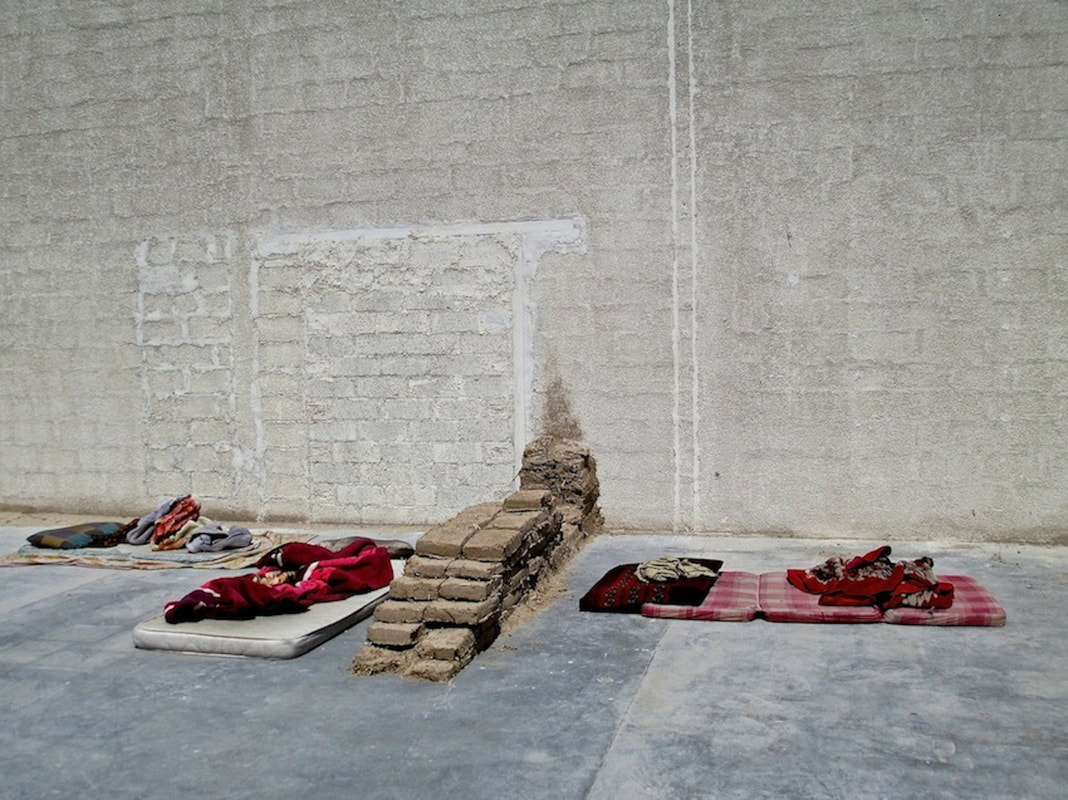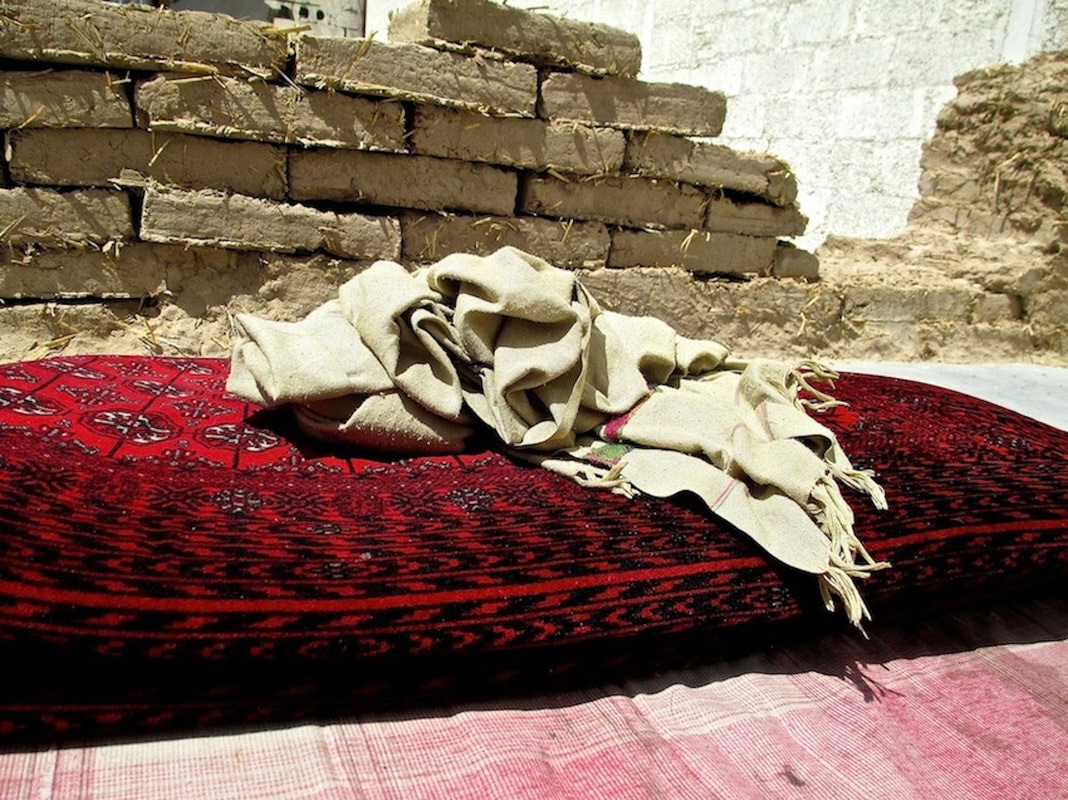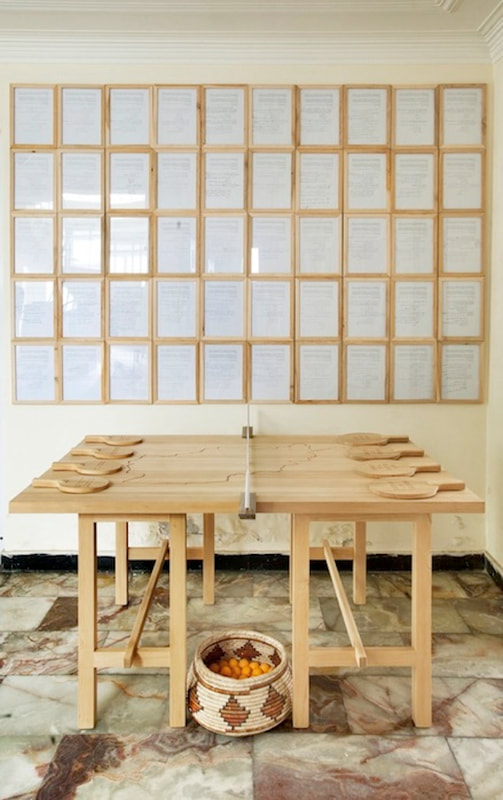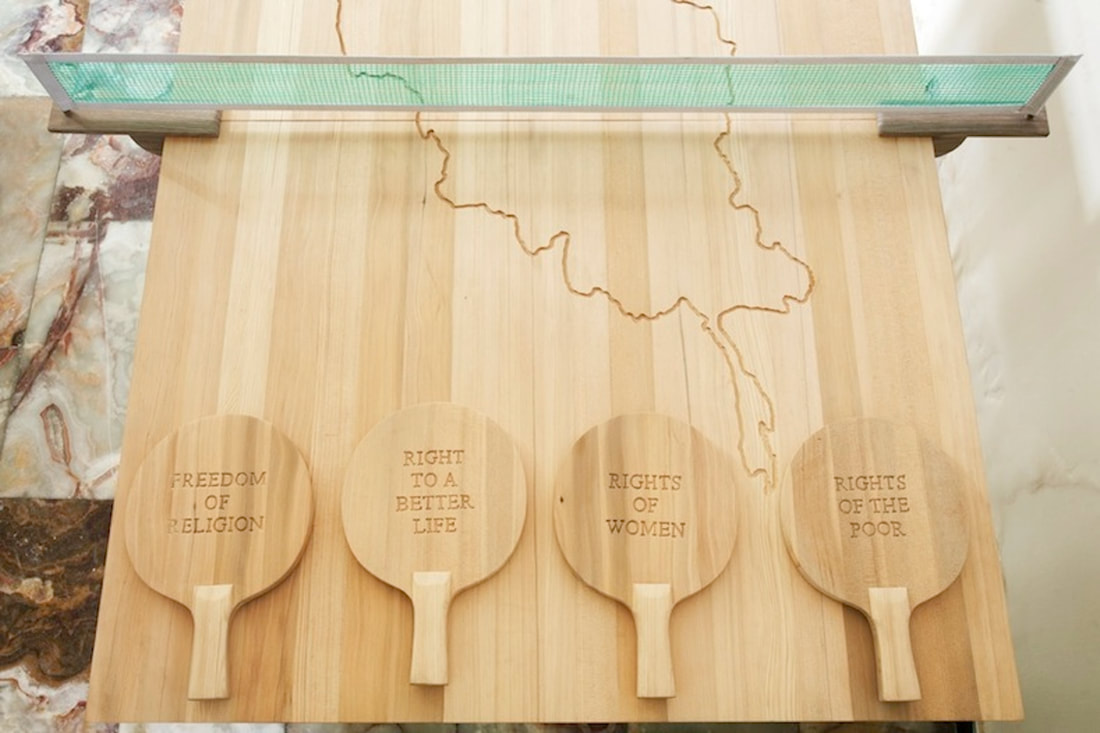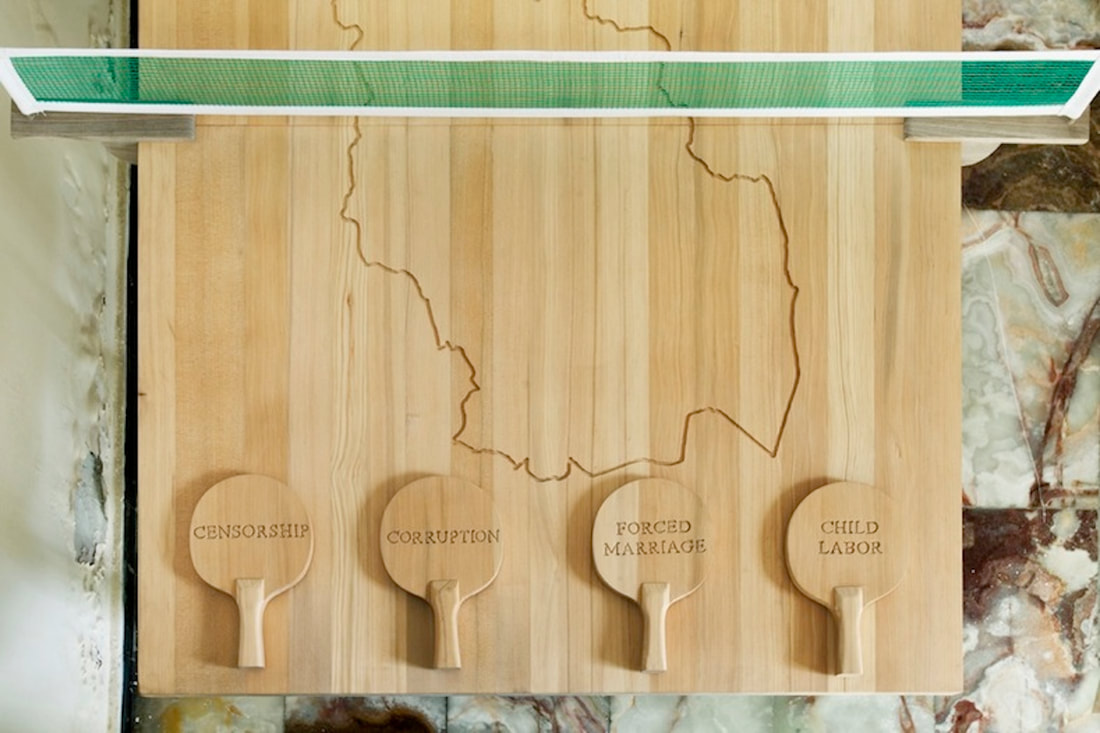Cultural Artist - Conceptual Anthropologist
Squatters, 2013
Mud-Brick Making Experiment + Community Initiated Site-Specific Installation
Museum Without Walls (Residency), Traffic Gallery
Dubai, UAE
As a research residency exploring traditional/vernacular architectural forms and migrant construction labor in Dubai, secondary research was coupled with the creation of handmade mud bricks that were fashioned into a partial wall ruin. Eventually, squatters claimed the space for themselves and began spending nights sleeping next to the wall segment. That they chose to huddle around the mud wall speaks not only to the inherent (albeit complicated) sense of security and privacy provided by walls, but also to the workers' (who perhaps come from countries where mud architecture is not uncommon, including southern India) attraction to what may have served as, in the slightest of ways, a memory of, and/or connection to, home.
Mud-Brick Making Experiment + Community Initiated Site-Specific Installation
Museum Without Walls (Residency), Traffic Gallery
Dubai, UAE
As a research residency exploring traditional/vernacular architectural forms and migrant construction labor in Dubai, secondary research was coupled with the creation of handmade mud bricks that were fashioned into a partial wall ruin. Eventually, squatters claimed the space for themselves and began spending nights sleeping next to the wall segment. That they chose to huddle around the mud wall speaks not only to the inherent (albeit complicated) sense of security and privacy provided by walls, but also to the workers' (who perhaps come from countries where mud architecture is not uncommon, including southern India) attraction to what may have served as, in the slightest of ways, a memory of, and/or connection to, home.
Untitled Table #1 2013
Context-Specific Installation, Commission (Building Markets)
Human Rights Commission, Kabul
More than a decade after the US invasion of Afghanistan, an illegal invasion justified in part on the need to promote and defend the human rights of Afghan people, Afghanistan is still struggling to establish these rights in a concrete way. The piece speaks to the complexities of this endeavor in Afghanistan, where the defenders and violators of human rights compete in a ping-pong match over the country’s future. Through a survey of 50 people, the 4 most important rights and 4 most serious rights violations were extracted and carved into the paddles while the surveyed individuals play the role of spectators over the competition.

